If your dog has gotten into Vaseline, it can be a worrying moment for any pet owner.
Many dogs are curious and might find the texture and smell of petroleum jelly appealing.
You need to know what steps to take to ensure your dog’s safety and well-being.
Understanding the effects of Vaseline on dogs is crucial in these situations.
While Vaseline is generally considered safe in small amounts, consuming large quantities can lead to issues.
Knowing how to react can make a big difference in keeping your furry friend healthy.
1) Stay Calm
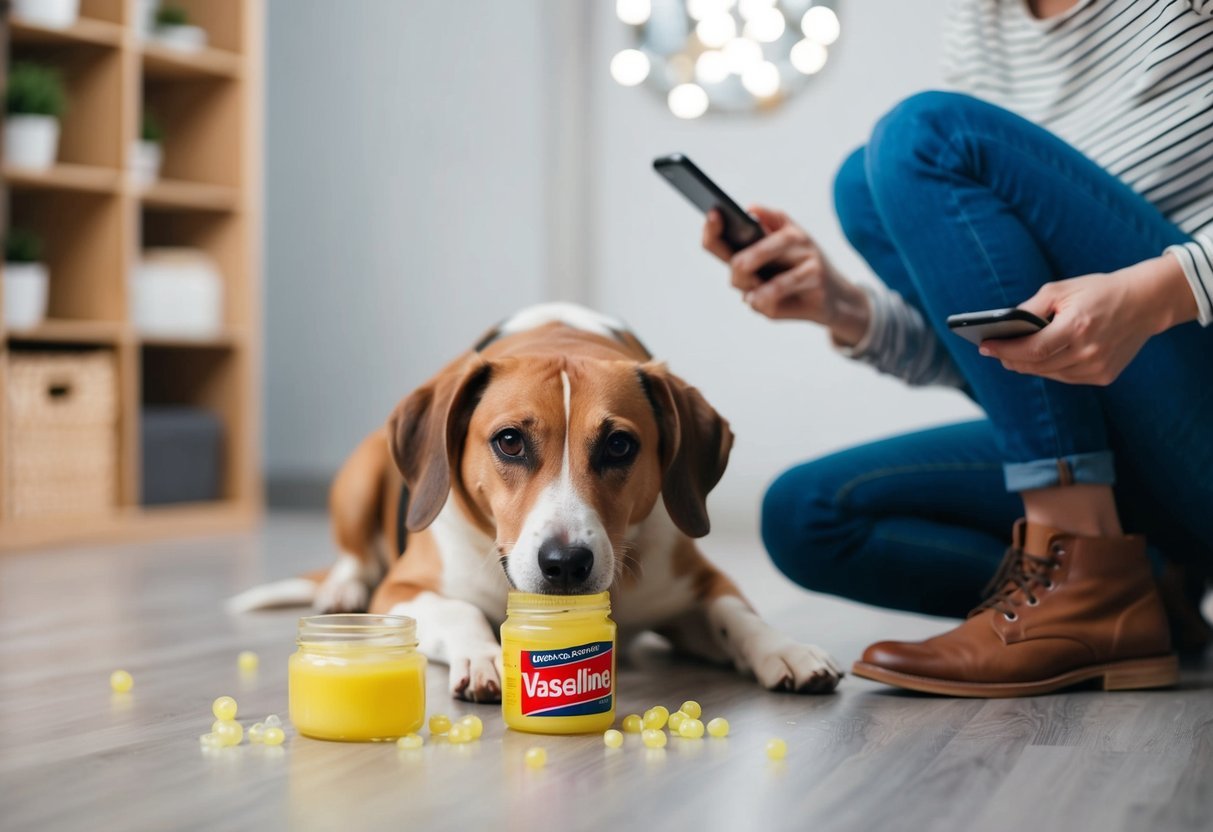
If your dog ate Vaseline, staying calm is the first thing you should do.
Dogs can pick up on your feelings, so keeping a cool head can help them stay relaxed too.
Take a moment to assess the situation.
Ask yourself how much Vaseline your dog may have eaten.
A small lick is usually not a cause for alarm, but it’s good to monitor your pup closely.
Observe your dog for any unusual signs.
Look for symptoms like vomiting, diarrhea, or an upset stomach.
If your dog seems fine, you can likely relax a bit more.
If you’re unsure, it’s always okay to reach out to your vet.
They can offer guidance based on your dog’s size and overall health.
It’s better to ask than to worry.
Staying calm and collected helps you make better decisions for your dog’s health.
Plus, it makes the situation less stressful for both of you.
Remember, your dog relies on you to guide them through this.
Check Ingredients
It’s important to check the ingredients in the Vaseline your dog may have eaten.
Most Vaseline products are made from petroleum jelly, which is generally safe in small amounts.
However, some types might have extra ingredients that could be harmful to dogs.
Look out for specific ingredients like cocoa butter or xylitol.
Both can be toxic to dogs and lead to serious health issues.
If you see any harmful ingredients, it’s best to contact your vet right away.
If the Vaseline seems to be just the standard petroleum jelly, your dog probably won’t face severe problems.
Just be sure to monitor them for any signs of an upset stomach.
Keeping an eye on their behavior can help you catch any issues early on.
Having the tub or packaging handy when you talk to your vet can also be helpful.
They can give you the best advice based on what’s in the product.
Call Your Vet
If your dog eats Vaseline, the first thing you should do is call your vet.
They know your pet’s health history and can give you the best advice.
When you call, be ready to share details.
Tell them how much Vaseline you think your dog ate and if they consumed anything else.
This helps them assess the situation better.
In some cases, your vet may suggest monitoring your dog at home, especially if only a small amount was ingested.
However, if it was a larger amount, they might want you to bring your dog in for an examination.
Do not try to make your dog vomit without your vet’s advice.
This can sometimes cause more harm than good.
It’s always better to be safe than sorry.
So, when in doubt, reach out to your veterinarian.
Your vet can provide peace of mind and guidance on the next steps.
4) Monitor for Symptoms
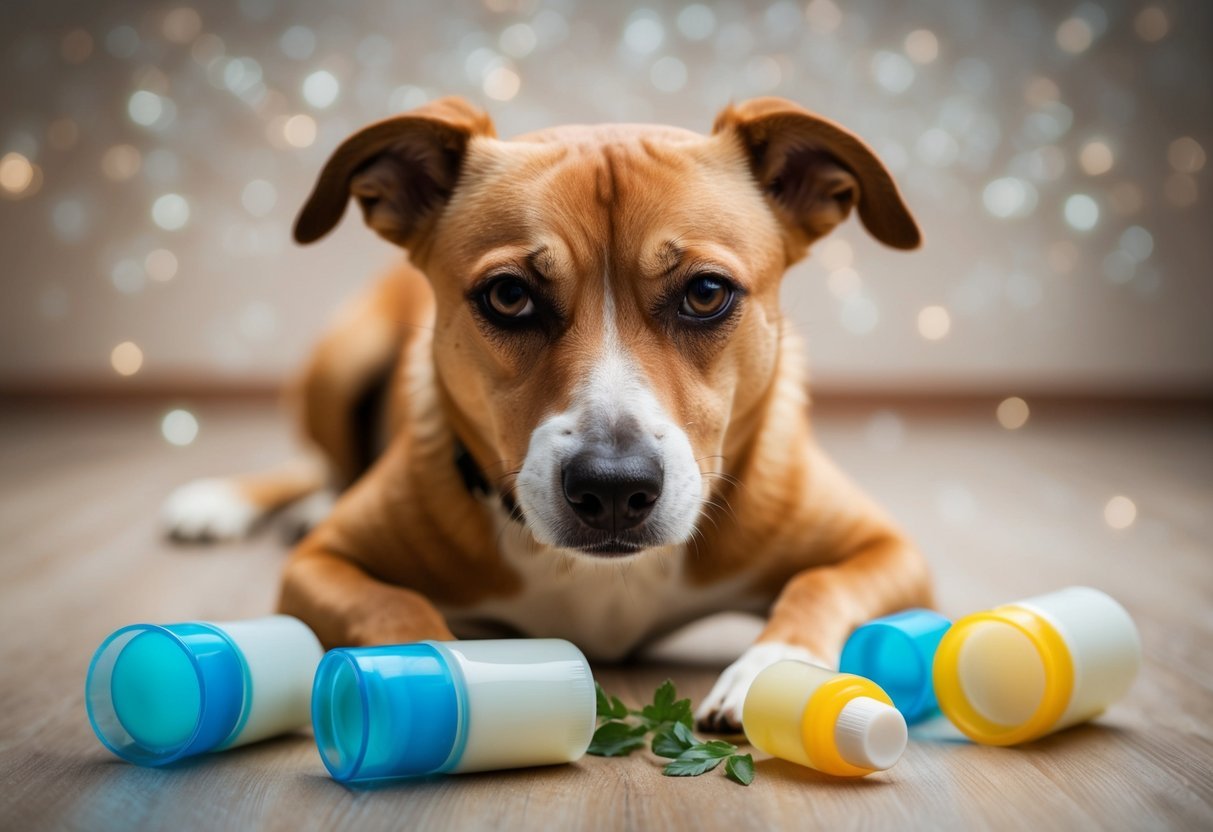
After your dog eats Vaseline, keeping an eye on them is important.
Many dogs may not show any signs of distress, but it’s essential to know what symptoms to watch for.
Common signs include vomiting, diarrhea, or lethargy.
If your dog starts experiencing any of these, it’s a good idea to reach out to your veterinarian.
They can guide you on the next steps to take.
If your pup seems fine after eating Vaseline, you can still be cautious.
Check in on them regularly for any changes in behavior or appetite.
It’s better to be safe than sorry.
Make sure to monitor your dog for 24 to 48 hours after ingestion.
Most dogs will not have serious issues, but being vigilant helps ensure their health.
If anything seems off, contacting your vet can provide peace of mind.
Your dog’s well-being is what matters most, so stay alert!
5) Hydrate Your Dog
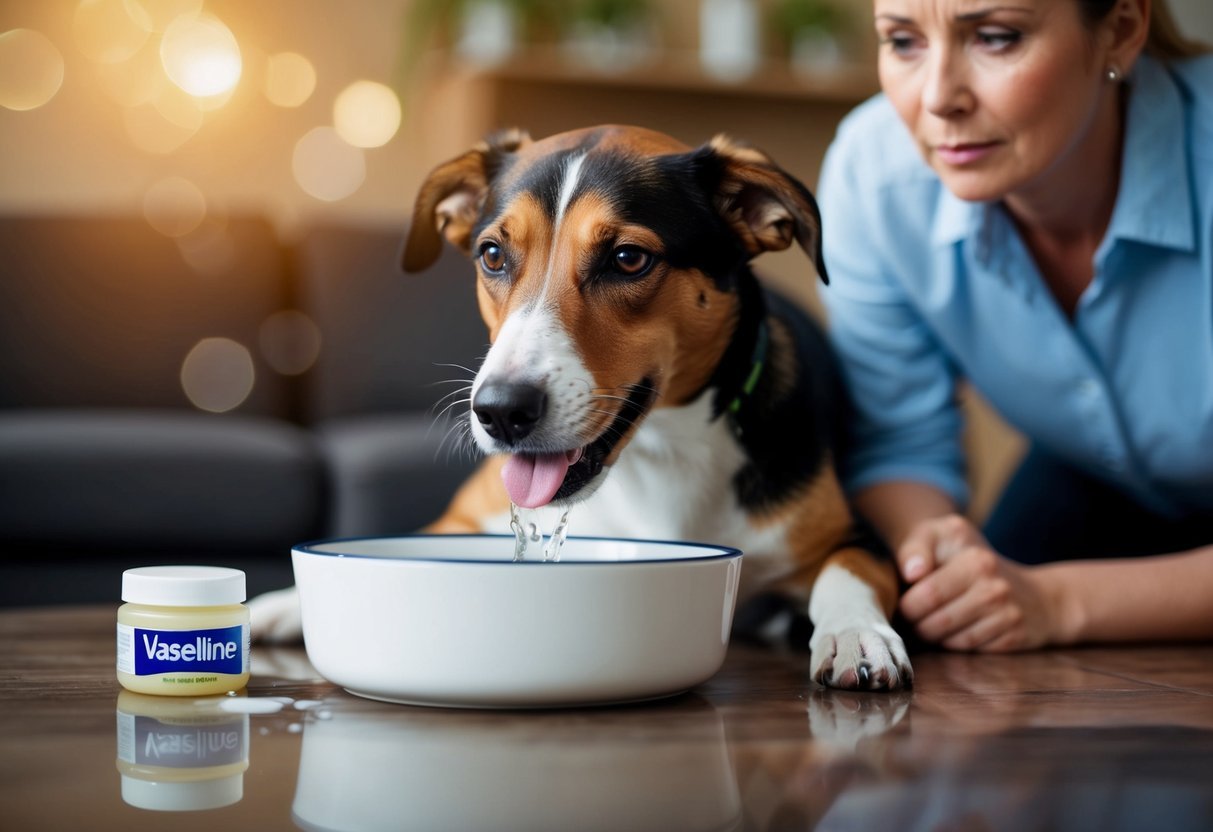
If your dog has eaten Vaseline, keeping them hydrated is important.
This helps their body process the substance more easily.
Make sure fresh water is always available.
You can place water bowls in different areas around your home.
This way, your dog can drink whenever they feel thirsty.
If your dog is not drinking enough, you might consider adding low-sodium broth to their water.
This can make it more appealing and encourage them to hydrate.
Monitor your dog’s water intake closely.
If they seem lethargic or refuse to drink, it’s best to reach out to your vet for advice.
Watch for any signs of discomfort after they’ve ingested the Vaseline.
Keeping them hydrated can help minimize any potential issues.
Your vet can guide you on the best steps to take next.
6) Avoid Inducing Vomiting

If your dog ate Vaseline, you might think about making them vomit.
However, this isn’t always the best choice.
Inducing vomiting can sometimes do more harm than good.
Vaseline isn’t toxic, but it can still cause stomach upset.
It’s better to let your dog’s body handle it naturally.
You should also avoid inducing vomiting if your dog shows any signs of distress.
If they are lethargic, weak, or unconscious, do not attempt to make them vomit.
This can lead to choking or other serious issues.
Always remember to consult your veterinarian before taking any action.
They can guide you on the best steps to take based on your dog’s specific situation.
Keeping an eye on your dog for signs of discomfort is essential.
Monitor them closely for anything unusual, like vomiting or diarrhea.
If these occur, contact your vet immediately.
Understanding Vaseline and Dogs
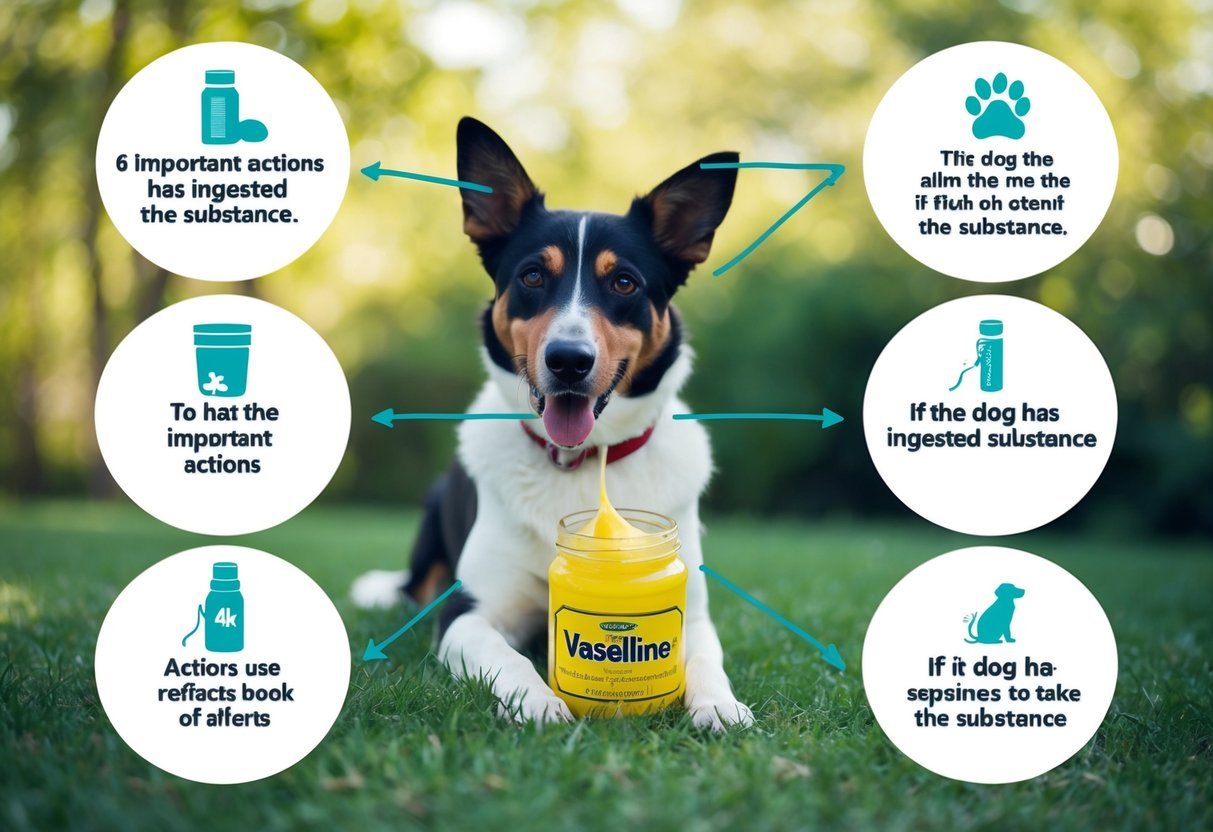
Vaseline, or petroleum jelly, is a common household item.
Understanding what it is and why your dog might find it appealing can help you know how to respond if your pet consumes it.
What Is Vaseline?
Vaseline is a brand name for petroleum jelly.
It’s a thick, greasy substance made from mineral oils and waxes.
This product is often used as a moisturizer for people, protecting skin from dryness.
Though Vaseline isn’t considered toxic for dogs in small amounts, it isn’t meant for them to eat.
Regular use on your skin means it might smell interesting to your dog, leading them to sample it.
If your dog licks a bit, it usually won’t cause serious problems.
Still, you should watch for any unusual behavior or signs of discomfort.
Why Dogs Might Eat Vaseline
Dogs are naturally curious creatures, and they explore the world with their mouths.
Since Vaseline has a unique texture and smell, it can catch your dog’s attention.
Factors that may lead your dog to lick or eat Vaseline include:
- Scent: Dogs have a strong sense of smell. The odor of Vaseline might intrigue them.
- Curiosity: They might find the container or the area where it’s stored interesting.
- Boredom: If they’re looking for something to do, they may explore and nibble on unexpected items.
It’s essential to supervise your dog and store products like Vaseline out of their reach to avoid any unwanted snacking.
Health Implications for Dogs

When your dog eats Vaseline, there are specific effects on their health that you need to be aware of.
Understanding the potential side effects and how Vaseline impacts digestion can help you respond better.
Potential Side Effects
If your dog consumes Vaseline, several side effects might arise.
It can lead to issues like:
- Nausea: Your dog may feel sick, which can cause excessive drooling.
- Vomiting: Some dogs might vomit, especially if they ingested a large amount.
- Diarrhea: Loose stools may occur as their body tries to push out the Vaseline.
- Stomach Discomfort: Your dog could show signs of pain or discomfort.
Keep an eye on their behavior.
If your dog experiences persistent vomiting or diarrhea, it’s crucial to consult your veterinarian.
These signs indicate that they may have consumed too much Vaseline or are having a reaction to it.
How Vaseline Affects Digestion
Vaseline is a petroleum product, and while it’s not toxic, it can disrupt your dog’s digestive system.
The primary concern is that it may coat the intestines.
This can lead to:
- Constipation: The slippery nature of Vaseline may affect normal bowel movements.
- Blockages: In heavy cases, too much Vaseline can potentially cause a blockage, requiring medical attention.
Even if your dog only licked a small amount, monitor their eating and bathroom habits for changes.
If you notice anything unusual, don’t hesitate to get veterinary advice.
Prompt action can prevent more serious health issues.
Frequently Asked Questions
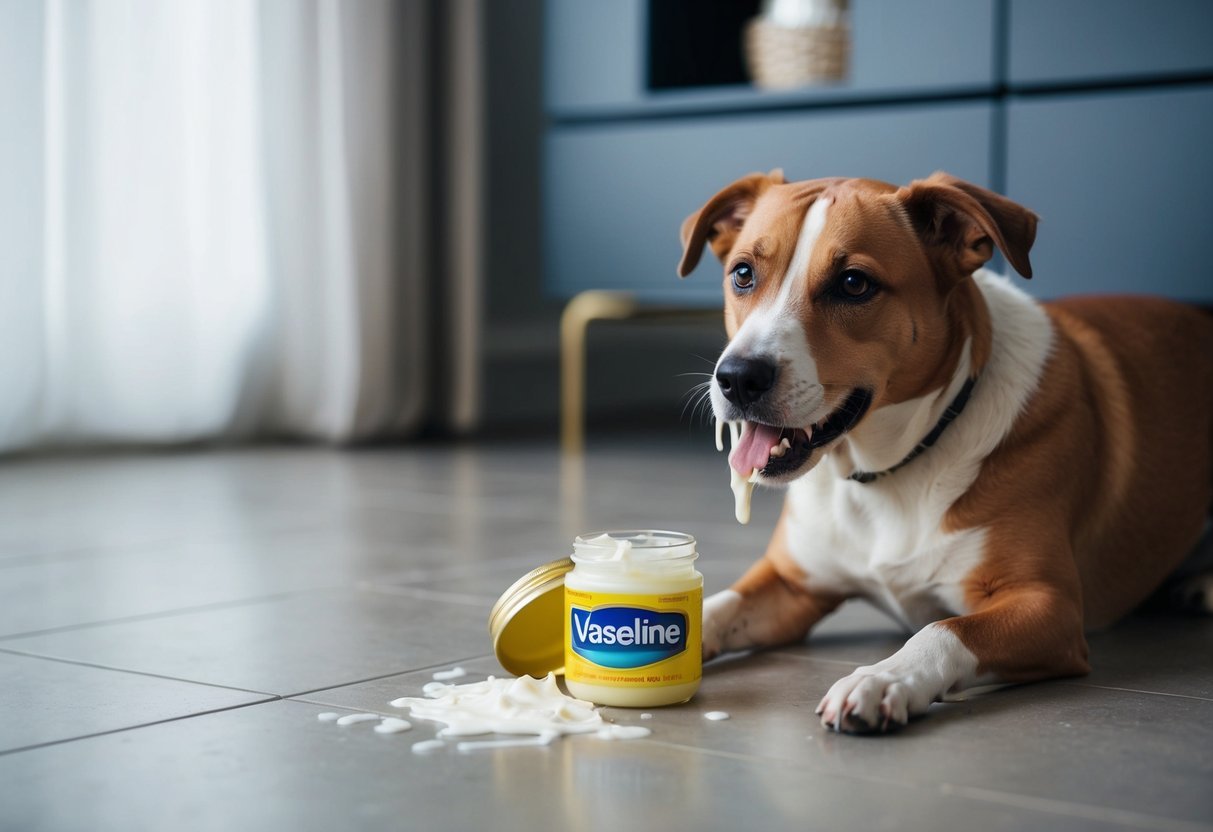
If your dog eats Vaseline, you might have a lot of questions.
Here are some common concerns and answers to help you navigate the situation.
What should I do if my dog ingests Vaseline?
First, stay calm.
If your dog licked or ate a small amount, they might be fine.
However, it’s always best to check with your vet for specific advice.
Is there a risk of poisoning when my dog eats Vaseline?
Vaseline is generally not toxic to dogs.
Most dogs can lick a small amount without serious harm.
Still, keep an eye on them and consult your vet if you’re worried.
Can eating Vaseline lead to health issues in dogs?
While a small amount usually won’t cause issues, eating large quantities can lead to vomiting or diarrhea.
Watch your dog for any unusual symptoms and reach out to your vet if they persist.
Should I be concerned if my dog licked some Vaseline lip balm?
If your dog licked a flavored lip balm, check the ingredients.
Some lip balms may contain harmful substances like xylitol.
It’s best to call your vet if the ingredients are questionable.
What steps can I take if my dog consumes a Vaseline product?
Immediately contact your vet for guidance.
They can recommend the best steps based on how much Vaseline your dog ingested and their specific health needs.
How does ingestion of Vaseline affect a dog’s digestive system?
Ingesting Vaseline can cause digestive upset in some dogs.
This might include symptoms like diarrhea or loose stools.
Monitor your dog closely and consult your vet if symptoms continue.

